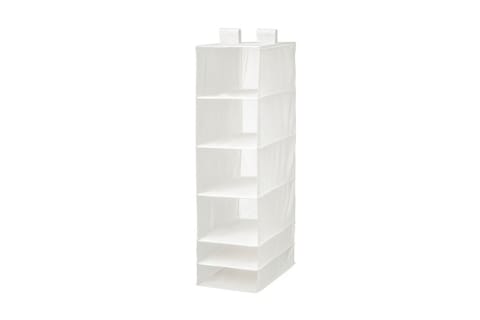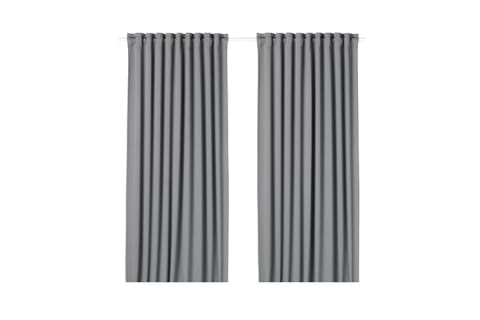Advertisement
Trouble Falling Asleep? It Might Be Your Home — What The Science Says

Sleep routines aren’t just what you do during the final moments before bed. In fact, how you care for yourself throughout the day can help encourage high-quality sleep—or get in the way of it.
One of the most crucial ways you can set yourself up for success is through your environment. What you surround yourself with affects your peace of mind, and therefore your ability to wind down in the evening and stay asleep throughout the night.
And where does this matter most? Your bedroom. Research shows that certain environmental elements can get in the way of a restful night, including making it harder to fall asleep and stay asleep.
Here’s how to create a space that’s optimized for sleep—with help from your local IKEA store.
Air quality can lead to poor sleep efficiency
Indoor air quality is one of the most foundational aspects of a healthy home. And recently, there’s been much more attention on the health effects of indoor air pollutants. Especially given the fact that research1 estimates people spend on average 90% of their time in indoor environments (be that an office building, restaurants, gyms, or the home), researchers suggest that indoor air pollution may have more pronounced health effects than outdoor air pollution.
Perhaps not surprisingly, indoor air quality has a particularly interesting influence on sleep. In fact, a systematic review2 evaluating indoor air pollution and sleep outcomes found a relationship between air pollutants and sleep inefficiencies, poor quality, and in some cases, even lead to sleep conditions like apnea.
The sleep solution:
A simple solution is to keep an air purifier in your bedroom. It can help filter out indoor pollutants, dust, and allergens—helping you breathe and sleep better throughout the night. IKEA offers several sleek, affordable options that fit comfortably in any room.
You may also want to consider getting an air quality sensor, which can help you monitor the invisible environment in your home. IKEA’s VINDRIKTNING detects particulate matter—and blends in perfectly to any decor style.
Clutter can increase stress & disrupt rest
Stress can impact sleep—and this connection is fairly well studied. Research4 shows elevated stress can lead to insomnia and other sleep disorders. Other studies have shown it can reduce the amount of hours slept each night. It can also disrupt sleep architecture5, resulting in reduced REM cycle and decreased sleep efficiency (or, how much deep sleep was achieved during time in bed).
The sleep solution:
Looking into the connection between clutter, stress, and sleep, one study found that tidying and organizing before bed can serve as a meaningful tool to improve sleep quality. The researchers emphasized that it was important to “keep thoughts positive and avoid perfectionism” during this practice.
One way to make decluttering easier is to use organization decor items to keep your belongings in their right place. IKEA’s home furnishing, storage solutions, and closet organizers can help keep your bedroom calm and tidy, without much effort.
Sound disturbances can make it harder to fall & stay asleep
This should come as no surprise to anyone who has lived near a busy street or had loud upstairs neighbors, but research6 shows sound can make it harder to enjoy a restful night. In fact, one study7 found that being exposed to environmental noise throughout the day is linked to worsen sleep patterns and decreased quality of life.
Research also shows that environmental noise greatly reduces sleep satisfaction8 (basically, how restful you feel upon waking). This is because noise can disrupt our natural circadian rhythms, leading to sleep fragmentation.
The sleep solution:
Environmental sound is often outside of our control. But a few things are, including how we design our bedrooms. Utilize sound absorbing decor items such as wall panels, curtains, and rugs from IKEA. These help soften the noise we’re exposed to on a day-to-day basis, offering a quieter environment.
Temperature can affect sleep quality
Bedroom environment10 can influence this natural process. Researchers note you should aim for a room temperature of somewhere between 68 to 77°F11 during sleep to help get your body ready for rest.
The sleep solution:
If possible, turn down your room’s temperature, especially during the summer. You should also be smart about bedding, as the fabric can help regulate your body temperature during sleep.
For example, cotton sheets can be both breathable and cooling in the summer, yet warm in the winter. And for those who run warm no matter the time of year, linen is highly breathable, allowing for optimal air circulation during sleep. In fact, research13 shows the fabric can help improve sleep quality in hot, humid environments. Find these fabrics (and more) at your local IKEA store.

Light is critical for optimal circadian rhythm
Research14 shows that our circadian rhythm is governed, in part, by light exposure. In the morning, cool, blue light helps signal to our brains to wake up, power on, and start the day. In the evening, warm, soft lighting (like during golden hour) helps our bodies know we should be gearing up for rest.
On the flip side, studies show that being exposed to certain light sources at inappropriate times during the day is linked to sleep disturbances. For example, the researchers of one study14 found that exposure to strong, artificial light may increase the risk of circadian rhythm sleep–wake disorders.
The sleep solution:
Tailor your bedroom lighting to the time of day to help regulate your circadian rhythm with the help of IKEA’s lighting fixtures. In the morning, open up your curtains and let the bright morning sun shine through the windows. In the evening, switch to bedside lamps with warm bulbs to help calm your mind and body. And when it’s time to turn off the lights, draw your blackout curtains shut.
Mattress comfort can influence how the body feels in the morning
Mattress comfort is a relative term, as every one has unique needs. But research does show that having the right mattress can positively influence sleep quality.
The sleep solution:
Finding the right mattress doesn’t have to be a challenge. The best path forward is to visit your local IKEA store to check out their variety of options. From soft to firm, find your right level of support. And test out the different materials, such as memory foam, foam, spring, 5 spring core, or a hybrid version. Of course, they come in all sizes to fit any room.
16 Sources
- https://www.ncbi.nlm.nih.gov/pmc/articles/PMC5707925/
- https://www.ncbi.nlm.nih.gov/pmc/articles/PMC7877449/
- https://journals.sagepub.com/doi/10.1177/0146167209352864
- https://www.ncbi.nlm.nih.gov/pmc/articles/PMC7045300/
- https://www.ncbi.nlm.nih.gov/pmc/articles/PMC4266573/
- https://www.ncbi.nlm.nih.gov/pmc/articles/PMC4608916/
- https://www.sciencedirect.com/science/article/pii/S0048969724001190
- https://www.mdpi.com/1660-4601/15/3/519
- https://www.ncbi.nlm.nih.gov/pmc/articles/PMC6491889/
- https://www.sciencedirect.com/science/article/abs/pii/S2352710221004332
- https://www.sciencedirect.com/science/article/abs/pii/S0048969723042468?via%3Dihub
- https://www.ncbi.nlm.nih.gov/pmc/articles/PMC3427038/
- https://www.mdpi.com/2071-1050/13/16/9099
- https://www.ncbi.nlm.nih.gov/pmc/articles/PMC6751071/
- https://www.nature.com/articles/s41598-023-39636-y
- https://journals.sagepub.com/doi/abs/10.1177/154193120204600613?journalCode=proe












